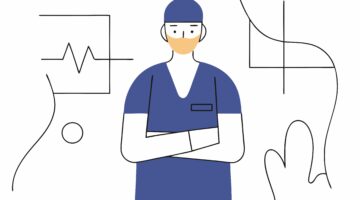Ear infections drive some 13 million children and their parents or caretakers to the doctor each year — often to be told to wait a few days and see if the infection clears on its own, or to be given an antibiotic that may or may not help.
The problem with those solutions, according to medical device company EntraTympanic, is they either leave the child in pain or potentially result in unnecessary use of antibiotics, which comes with its own set of problems. The Boston-based company is proposing a device it says would address both problems.
Interestingly, it’s not a new idea at all. What the team of engineers and physicians out of MIT, Harvard and Boston Children’s Hospital did was mechanically automate a procedure that ENT specialists use to treat infections that don’t go away with watchful waiting or antibiotics. It’s called tympanocentesis, and it involves the use of a needle with a tube attached to drain built-up fluid from behind the eardrum.
The bulging, red or cloudy eardrum that’s characteristic of an ear infection is usually caused by bacteria that makes its way to the middle ear when a child has an upper respiratory or viral infection. The tube that drains fluid from the middle ear and delivers fresh air to it can become swollen or blocked, trapping fluid inside and causing pressure or pain.
The problem with tympanocentesis, said EntraTympanic CEO George “Buzz” Kenney, is that it involves great dexterity on the part of the physician. Then add to that a squirming child and the fact that the physician has limited depth perception while inserting the needle, and there’s plenty of room for improvement.
EntraTympanic’s device, the EToscope, is an otoscope-like device that’s used with disposable attachments. It fits snugly in the ear, so if the child moves, the device moves with him, Kenney said.
As the physician inserts the device into the ear, a slight vacuum is created in the ear canal, causing the tip of the device to slide forward and latch onto the eardrum, which stops the forward motion. Then two tiny tubes pierce the eardrum – one to drain the fluid from the middle ear and the other to deliver a medication that EntraTympanic proposes would be a steroid/surfactant combination.

Navigating The Right Steps For Your Healthcare Startup
This webinar will explore how a banking platform approach could be the resource for your company.
When the device is removed, the small holes that remain ventilate the middle ear, which in itself is therapeutic, Kenney said. They close within a day or two.
The company envisions the device being used when a child is first diagnosed with an ear infection. Based on its research, the company thinks the procedure could be performed as many as 15 times in one child without harming the eardrum.
It could be performed by an ENT specialist or a trained family pediatrician in about five minutes, for about the same cost as the manual procedure, Kenney said.
But the value proposition isn’t just that it could simplify the procedure, save time and potentially bring it to general pediatricians’ offices. A big part of EntraTympanic’s cause revolves around reducing the number of antibiotics given to children.
That topic has sparked great debate in the medical community over the last two decades as resistance has become a reality and studies have linked antibiotic use in children to changes in the microbiome associated with allergic asthma and irritable bowel disease. Ear infections are the most common reason that U.S. children are given antibiotics, and the American Academy of Pediatrics just released new guidelines last month that tightened recommendations on when pediatricians should prescribe them. EntraTympanic hopes its approach will ultimately help drive down their use.
It’s designed and ready for final engineering and prototyping, Kenney said. Now he’s out raising $3.5 million to $5 million to make that happen.
The go-to-market strategy starts with clinical trials and commercialization in Canada, followed by several developing countries and then finally in the U.S. and Europe. Another important piece of that is a longitudinal study that would follow patients to see how those treated with the device rather than antibiotics do with respect to developing autoimmune disorders and antibiotic resistance down the line.
Kenney, a serial entrepreneur with a background in materials processing at MIT, formed the company with Dr. Christian Phfeffer, a physician and co-founder of Claros Diagnostics (acquired by OPKO Health Inc. in 2011).








